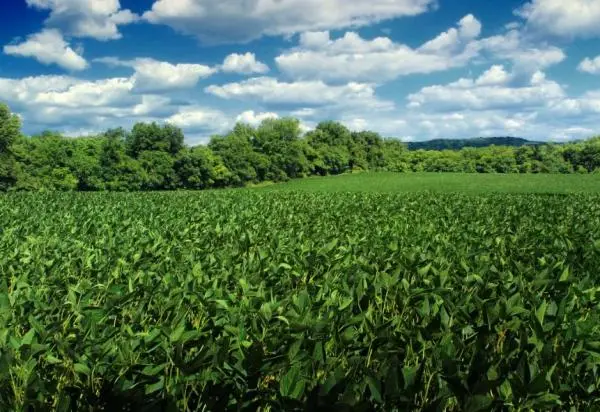Have you ever heard of green manure? This ecological technique to enrich the soil is far from new: in ancient times it was commonly used to combat the depletion of nutrients in the soil. Luckily, it is not as difficult to use as it may seem at first, and it is really beneficial.
If you want to learn more about this technique that, luckily, is being used more and more, join us in this interesting practical gardening guide in which we talk about what green manure is and how it is made .
What is green manure and what is it used for?
Green manure is not a fertilizer that we must make and then incorporate into the orchard or garden. It is a technique with which we can enrich the soil with the help of some species of plants that help to improve the properties of the soil .
When the soil is discovered at the end of a certain harvest or we are simply not working on it for a while, the sun and the elements punish the earth and microorganisms, making it poorer and drier. On the other hand, if we take advantage of the seasons in which we are not growing anything to plant certain species that we will later harvest or allow to dry naturally so that they become incorporated into the soil, we can improve their nutrient content , their properties and their ability to sustain future demanding crops in nutrients.
It is a practice used especially in orchards, when it is necessary to prepare plots of land that are somewhat abandoned or abused, or when we want to prepare the soil for a very demanding crop in nutrients . However, its benefits also extend to gardens and ornamental-type spaces, since flowers are equally or even more grateful for having rich soils.

Types of green manure
There are many types of green manure or different crops that can be used as green manure. Its convenience will depend on the specific details of our climate and soil, as well as the season in which we want to prepare the green manure or the crop that interests us after this.
The most common is to use legumes, due to their ability to fix atmospheric nitrogen thanks to their relationship with rhizobia, beneficial bacteria. However, the selection of plants for green manure is very wide. These are some of the most used:
Fabaceae or legumes
As we have said, these are the most commonly used for their ability to fix nitrogen in the soil. It is common to use vetches, lupins, clovers, beans or peas, among many others.
Grasses for green manure
Grasses tend to give very good results, especially when combined with some legumes. A widely used combination is that of oatmeal and vetch. It is also common to plant Italian rye or rye.
Cruciferous
Crucifers such as turnip, cabbage, rapeseed and mustard are also very good options and the latter, in fact, is one of the most used. This is because it has roots with high branching capacity and rapid growth. Mustard roots are very spreading and breaking up the soil, leaving it looser and finer, which helps its oxygenation and the development of the crop that follows it. In addition, in winter it dries by itself, so if we plant it at the end of summer or in autumn, it will not even be necessary to mow it. Another advantage of mustard is that it keeps some garden pests at bay.
There are also other cruciferous plants that can be used to prepare and enrich the soil. The Russian comfrey is well known for its great capacity for growth and creation of plant mass. It is widely used in the production of slurry and compost , and even in the production of mulching or mulching .
Buckwheat is a great option when we want to treat very impoverished soils, and facellia has the ability to attract bees and bumblebees, with all the benefits that this entails.

How to make green compost – tips
As you prepare to use this technique, follow these tips for sowing green manure :
- The first thing will obviously be to choose where we will do it. It is about taking advantage of empty spaces in the orchard or garden, which then we think to take advantage of to cultivate something of interest.
- It is also important, of course, to take into account the sowing season . However, here we have much greater freedom than when sowing normal crops, since the green manure only has to grow: it is important that the plant dries before flowering . This is because legumes and other species accumulate nutrients that they later deplete during flowering. Therefore, as soon as it begins to appear, we will mow our green manure crop . It is also possible to plant species that cannot withstand the cold in autumn, so that they dry out naturally when temperatures drop.
- Simply spread the seeds of your chosen green manure crop over the area to be enriched. Spread them more densely than usual, since you want the plant cover to be dense, and then cover the seeds with soil or a little compost.
- When the crop has grown and its flowering is near, follow it and crush the remains . Do not pull out the roots, which must remain in the ground to degrade naturally. Afterwards, you can simply leave the shredded remains on the ground or stir it slightly so that they deteriorate sooner. Both methods are equally valid.

